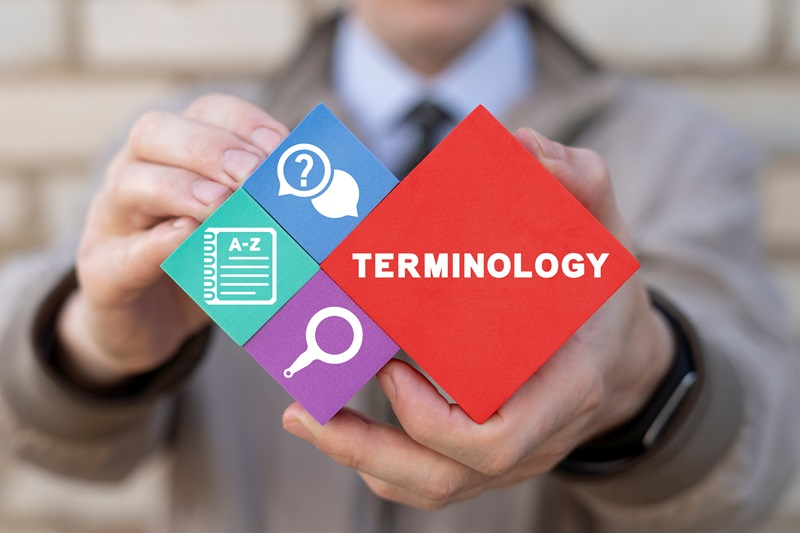Have you ever wondered how global brands keep their message uniform across dozens of languages? In large document translation projects, consistency is everything. We often say consistency is the “backbone of trust and brand integrity”. If one translator uses “auto-translate” in a legal text while another writes “machine translation” for the same term, the result is confusing. Worse, readers might lose faith in your content. That’s why successful translation teams rely on terminology management and translation style guides. These tools make sure every translator – whether human or AI-assisted – speaks with one voice. In this article, you’ll see how these methods deliver clear, on-brand translations, and why even Document Translation Services insist on them for quality results.
Why Consistency Matters in Translation
Imagine reading a user manual in five languages, but each version feels slightly different. The tone, formality, or key phrases jump around. You’d find it jarring, right? Consistency prevents that confusion. As one localization expert puts it, inconsistent translations can “lead to misunderstandings and a diluted message”, potentially harming your reputation. In other words, it’s not just about linguistic accuracy – it’s about preserving your brand’s essence across cultures.
Consistency builds trust: if customers see the same terminology and style in every market, they feel the brand is professional and reliable. For example, a catchy tagline must be rendered the same way every time. As Interpro notes, translators need to “consistently apply the same writing style” to slogans and one-liners; otherwise, different approaches can look “sloppy” or even confusing. On the other hand, when your translators have clear guidelines and glossaries, the end result is polished and on-brand. This is why language teams start every big project by standardizing terms and tone.
What Is Terminology Management?
Terminology management is our first line of defense against inconsistency. In practice, it means creating a termbase or glossary: a centralized list of your company’s key terms, products, and phrases paired with approved translations. Think of it as a dictionary customized for your brand. When translators see a term, they look it up in this glossary and use the exact approved version. This simple step makes a huge difference. For example, Laoret explains that termbases are stored in a Translation CAT tool so “multilingual terminology … [with] every approved translation will be shown alongside it”. By doing this, translators never have to guess which word to use – they just pick the one in the glossary.
The benefits are clear. An effective terminology management system ensures “consistent terminology” in every document. It speeds up work (translators don’t waste time debating synonyms) and even cuts costs (fewer edits needed later). Pairaphrase sums it up: a termbase is a “dynamic, accessible repository” that lets you “efficiently manage and distribute consistent terminology”. In other words, it drastically reduces the risk of errors or rework. Laoret even warns that poor terminology management can account for almost half of translation rework.
In your next project, ask the language provider: Do we have a glossary? If yes, make sure it’s used. In a well-managed workflow, your client-specific glossary is turned into a termbase by the vendor’s CAT tool. From then on, whenever a translator encounters a term with an approved translation, it automatically pops up. This “active recognition” speeds translation and keeps terminology consistent. And if a new term comes up mid-project? Good processes let translators suggest additions, which keeps the glossary growing with your content.
Terminology management isn’t just about single words. You can also include acronyms, trademarks, or industry jargon. For instance, Smartling advises including “brand-specific terms (proprietary names)” and “industry-specific terms” in your glossary. By listing what not to translate (like copyrighted terms) and what to use, you avoid embarrassing mistakes. In short, think of terminology management as the rulebook for your vocabulary across every translated document.
The Power of Translation Style Guides
If terminology management is the what to translate, a style guide is the how. A translation style guide is a written handbook for translators and reviewers. It details the preferred tone, voice, and formatting of your brand in each language. It might answer: Should the language be formal or friendly? Are we using American or British spelling? How do we handle dates and numbers? When you put these answers in one place, every translator can consult it like a style referee.
According to Interpro, a style guide for translation “provides a roadmap” to keep your message consistent across markets. It’s often more detailed than a regular editorial guide, since it covers multiple cultures. A well-made guide tells translators exactly how to preserve your brand’s identity. For example, you can specify whether to say “we” or “one” in formal text, or what level of formality to use for customers vs. technical readers. Smartling emphasizes that style guides “ensure consistency across messaging” by spelling out your brand’s tone and approved terms.
Here are some key elements a good translation style guide typically covers:
- Tone and Voice: Define whether the content should sound friendly, authoritative, academic, etc., in each language.
- Target Audience: Describe who will read it (e.g. engineers vs. consumers) so style matches their expectations.
- Terminology: Point to the glossary and list any must-use or must-avoid terms to prevent confusion.
- Formatting and Punctuation: Specify date formats, number styles, abbreviations, bullet styles, etc., since “consistency in formatting creates a polished look”.
- Cultural Sensitivities: Note any idioms, cultural references, or jokes that should be adapted or avoided to respect the audience.
- Grammar and Variants: State preferences (e.g. “UK English vs. US English”, or how to handle gender-neutral language) to keep writing uniform.
By giving translators these instructions up front, you minimize guesswork. As Blend explains, a style guide is an “indispensable tool” that outlines guidelines so the brand’s voice “remain[s] consistent across different languages”. This synergy with the glossary means the writer always knows what words to use and how to style them. When both the style guide and termbase are followed, all your translated documents will feel like they were written by one unified team.
Integrating Terminology and Style for Success
So, how do terminology lists and style guides work together in a real project? Imagine a team translating a 500-page technical manual into ten languages. Before anyone starts, project managers compile a glossary and a style guide (often with your input). Then each translator loads these resources into their CAT tool. As they work, the software will flag any term that should match the glossary and apply it automatically. Translators also refer to the style guide for voice and format questions.
Even during editing and proofreading, consistency checks are enforced: an editor will verify that every term matches the glossary and that the tone follows the style guide. This routine drastically cuts down on errors. Taurho Transcribes points out that QA in document translation includes “using style guides and glossaries to ensure the translated content retains the terminology of the original”. In short, these tools keep every piece of content aligned.
Large document translation services often formalize this process. For example, leading providers like Ulatus encourage clients to supply reference materials and glossaries before work starts. Laoret recommends that clients “provide a glossary with notes and a style guide” that get regularly updated as new content emerges. The language vendor then converts this glossary into a live term-base and ties it to each project. This collaboration ensures the brand’s evolving lexicon is honored.
Remember, maintaining these tools is an ongoing effort. As Interpro notes, a style guide shouldn’t be static – it needs “periodic reviews” and version control to capture new terminology, trends, or rebranding. Whenever you launch a new product or enter a new market, update the glossary and style book so everyone stays on track.
Best Practices for Consistent Translations
To wrap up, here are some proven tips we’ve gathered from translation experts:
- Build a Robust Glossary/TM: Start with an extensive term list in a CAT tool. Populate it with all your branded and technical terms. Train translators to always use the approved termbase when translating those words.
- Draft a Clear Style Guide: Create a concise guide covering tone, formatting, and reference usage. Share it with every translator and reviewer.
- Use Technology Wisely: Leverage Translation Memory (TM) alongside terminology. A TM stores previously translated segments, so repeated phrases come out identical. This doubles down on consistency by catching not just single words but whole sentences.
- Include Consistency Checks: As iTi’s process shows, make “consistency against the client’s TM, DNT, and SG” part of QA. Editors should compare translations to the style guide and glossary as a final step.
- Collaborate and Communicate: Involve your in-house team or end users early. Interpro suggests gathering input from marketing, HR, etc., to nail the brand voice. Encourage translators to ask questions – it’s better to clarify than to guess.
- Review and Update Regularly: Set calendar reminders to revisit your style guide and glossary. Language evolves and so do products. As Interpro says, schedule reviews so your guides stay current.
By following these practices, you’ll keep documents consistent no matter how many translators or languages are involved. In fact, experts agree that a well-maintained style guide and glossary are “indispensable assets” in localization. They not only safeguard accuracy, but save time (and money) by reducing revisions.
In conclusion, think of terminology management and style guides as your secret weapons for uniform global content. When implemented thoughtfully, even massive translation projects produce outputs that read like they came from one mind. So before your next big project – or if you engage any document translation services – be sure these tools are in place. Only then can you be confident that your translated documents will truly reflect your brand’s voice, no matter the language.
Read More Gorod








